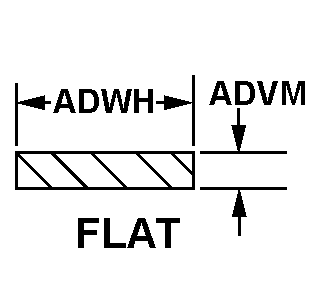9530009627176
Price Quote Get an up to date pricing and availability quote for this product. Order online or over the phone.
Quality Commitment
Serving our customers with quality and safety first.
- AS9120 Certified
- Audited supply chain
- ITAR Registered
- DDTC Registered
- HAZMAT Certified
- Customer service objectives
- Every product 100% inspected

9530-00-962-7176 Specification Set by the OEM (see RNCC code 3)
extruded
10.000 feet
0.2500in.
1.500in.
flat
rounded or square
soft temper
copper, QQ-C-502
copper alloy 110 or copper alloy 122 or copper alloy 125 or copper alloy 142 or copper alloy 102 or copper alloy 104 or copper alloy 105 or copper alloy 107 or copper alloy 114 or copper alloy 116 or copper alloy 120 or copper alloy 121 or copper alloy 123 or copper alloy 130 or copper alloy 128 or copper alloy 127
QQ-C-502 fed spec 1st material response
bar form and soft temper
Cross Reference Parts Part numbers that meet the specification outlined on this page and set by the OEM
Identification Item Identification Guide (IIG) and Item Name Code (INC)

Definition Definition of approved item name (AIN): "BAR,METAL"
A metallic product of ferrous or nonferrous material. It is produced as a solid section in straight lengths or short barlike forms of cored or solid cross section. It may be round, square, hexagon, oval, half-oval, or half-round shape whose width, diameter, or distance between parallel faces is 3/8 inch or 10.0mm or greater. Rectangular shape cross-sectional dimensions are limited to those established in appendix c, fiig a131. It is round to a maximum diameter of 24 inches or 610.0mm. For a rectangular shape less than 3/32 inch or 2.5mm thickness, see wire (1), nonelectrical.
9530-00-962-7176 Material Hazmat, Precious Metals, Criticality, Enviroment, and ESD
Indicates there is no data in the hmirs and the nsn is in a fsc not generally suspected of containing hazardous materials.
Precious metal content is unknown
The item does not have a nuclear hardened feature or any other critical feature such as tolerance, fit restriction or application.
Identification Codes
HMIC: Hazardous Material Indicator Code. A one position code that identifies a hazardous item.
PMIC: Precious Metal Indicator Code. A one position code which identifies items that have precious metals as part of their content. precious metals are those metals generally considered to be uncommon, highly valuable, and relatively superior in certain properties such as resistance to corrosion and electrical conductivity.
ESD: Electrostatic Discharge. Indicates if an item is susceptible to electrostatic discharge or electromagnetic interference damage. electrostatic discharge damage occurs when an accumulation of static electricity generated by the relative motion or separation of materials is released to another item by direct contact. electromagnetic interference damage occurs when an item comes into proximity with an electrostatic or magnetic field.
ENAC: Enviromental Attribute Code. Identifies items with environmentally preferred characteristics.
CRITL: Criticality Indicator Code. Indicates an item is technically critical by tolerance, fit, application, nuclear hardness properties, or other characteristics.






